
Badminton is a racquet sport played using racquets to hit a shuttlecock across a net. Although it may be played with larger teams, the most common forms of the game are "singles" and "doubles". Badminton is often played as a casual outdoor activity in a yard or on a beach; formal games are played on a rectangular indoor court. Points are scored by striking the shuttlecock with the racquet and landing it within the other team's half of the court.

Curling is a sport in which players slide stones on a sheet of ice toward a target area which is segmented into four concentric circles. It is related to bowls, boules, and shuffleboard. Two teams, each with four players, take turns sliding heavy, polished granite stones, also called rocks, across the ice curling sheet toward the house, a circular target marked on the ice. Each team has eight stones, with each player throwing two. The purpose is to accumulate the highest score for a game; points are scored for the stones resting closest to the centre of the house at the conclusion of each end, which is completed when both teams have thrown all of their stones once. A game usually consists of eight or ten ends.

Hopscotch is a popular playground game in which players toss a small object, called a lagger, into numbered triangles or a pattern of rectangles outlined on the ground and then hop or jump through the spaces and retrieve the object. It is a children's game that can be played with several players or alone. Hopscotch is a physical and cognitive workout.

Carrom is a tabletop game of Indian origin in which players flick discs, attempting to knock them to the corners of the board. In South Asia, many clubs and cafés hold regular tournaments. Carrom is commonly played by families, including children, and at social functions. Different standards and rules exist in different areas.
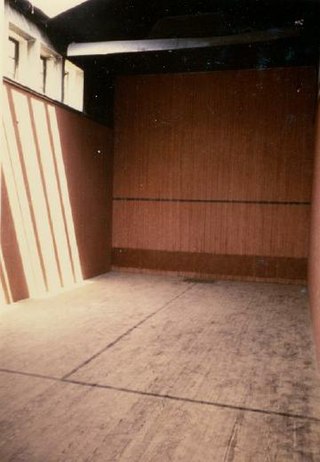
Squash tennis is an American variant of squash, one played with a ball and racquets that are more similar to the equipment used for lawn tennis, and with somewhat different rules. The game offers the complexity of squash and the speed of racquetball.

Shuffleboard is a game in which players use cues to push weighted discs, sending them gliding down a narrow court, with the purpose of having them come to rest within a marked scoring area. As a more generic term, it refers to the family of shuffleboard-variant games as a whole.

A baseball field, also called a ball field or baseball diamond, is the field upon which the game of baseball is played. The term can also be used as a metonym for a baseball park. The term sandlot is sometimes used, although this usually refers to less organized venues for activities like sandlot ball.

Bat and trap is an English bat-and-ball pub game. It is still played in Kent, and occasionally in Brighton. By the late 20th century it was usually only played on Good Friday in Brighton, on the park called The Level, which has an adjacent pub called The Bat and Ball, whose sign depicts the game. Brighton & Hove City Council started a Bat and Trap club based at The Level in 2013, as part of the Activities Plan associated with a £2.2m Heritage Lottery Fund and Big Lottery Fund-funded restoration of the park.
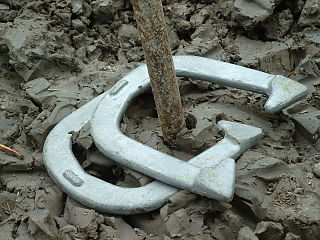
Horseshoes is a lawn game played between two people using four horseshoes and two throwing targets (stakes) set in a lawn or sandbox area. The game is played by the players alternating turns tossing horseshoes at stakes in the ground, which are traditionally placed 40 feet (12 m) apart. Modern games use a more stylized U-shaped bar, about twice the size of an actual horseshoe.

Chunkey is a game of Native American origin. It was played by rolling disc-shaped stones across the ground and throwing spears at them in an attempt to land the spear as close to the stopped stone as possible. It originated around 600 CE in the Cahokia region of what is now the United States. Chunkey was played in huge arenas as large as 47 acres that housed great audiences designed to bring people of the region together. It continued to be played after the fall of the Mississippian culture around 1500 CE. Variations were played throughout North America. Early ethnographer James Adair translated the name to mean "running hard labor". Gambling was frequently connected with the game, with some players wagering everything they owned on the outcome of the game. Losers were even known to commit suicide.

Skully is a children's game played on the streets of New York City and other urban areas. Sketched on the street usually in chalk, a skully board allows a game for two to six players. A sidewalk is sometimes used, offering greater protection from vehicular traffic; however, the asphalt on a typical city street is smoother and provides better game play than a bumpy concrete sidewalk.
Traditional Filipino games or indigenous games in the Philippines are games that are played across multiple generations, usually using native materials or instruments. In the Philippines, due to limited resources for toys, children usually invent games that do not require anything but players. There are different kinds of Filipino traditional games which are well-suited for kids, and the games also stand as one of the different cultural and traditional games of the Philippines. Due to the variety of skills used in these games, they serve an important purpose in the physical and mental development of Filipino children. These games are also an important part of Filipino culture.

Cornhole is a lawn game popular in North America in which players or teams take turns throwing fabric bean bags at an inclined board with a hole in its far end. The goal of the game is to score points by either landing a bag on the board or putting a bag through the hole.
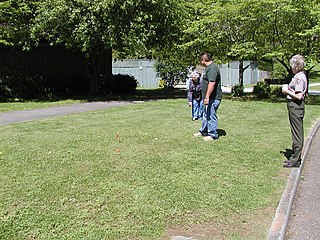
Cherokee marbles, or five hole is a traditional game among the Cherokee people of the United States, in which players roll small stone balls between five shallow pits dug into a playing field. Today, the game is commonly played with billiard balls. The game may be played in individual or team play, and in this century, has been introduced into the curricula of students attending schools in the Cherokee Nation. There is also a national tournament held annually during the Cherokee National Holiday.
Shoe-tossing is the throwing of footwear, the reasons for which differ based on cultural context.
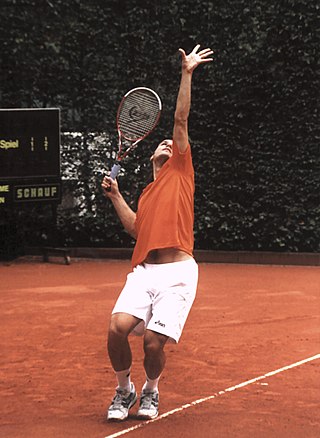
A serve in tennis is a shot to start a point. A player will hit the ball with a racquet so it will fall into the diagonally opposite service box without being stopped by the net. Normally players begin a serve by tossing the ball into the air and hitting it. The ball can only touch the net on a return and will be considered good if it falls on the opposite side. If the ball contacts the net on the serve but then proceeds to the proper service box, it is called a let; this is not a legal serve in the major tours although it is also not a fault. Players normally serve overhead; however serving underhand is allowed. The serve is the only shot a player can take their time to set up instead of having to react to an opponent's shot; however, as of 2012, there is a 25-second limit to be allowed between points.

A footbag is a small, round bag usually filled with plastic pellets or sand, which is kicked into the air as part of a competitive game or as a display of dexterity. "Hacky Sack" is the name of a brand of footbag popular in the 1970s, which has since become a generic trademark.
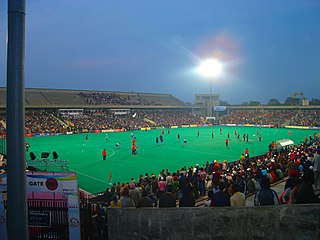
Punjabis play a wide variety of sports and games, ranging from modern games such as hockey and cricket, to the more traditional games such as Kabaddi, Kushtian (wrestling) and Khuddo khoondi. There are over 100 traditional games and sports of Punjab.
Paandi, also known as Pandi or Nondi, is a regional hopscotch game traditionally played in rural parts of India, Sri Lanka and also in certain other countries with large numbers of immigrant Indians. The game is played only for leisure and does not involve serious rules or regulations. It is also called as Tokkudu Billa or Tangidi Billa in Andhra Pradesh and Kunte Bille in Karnataka

South Asia has many traditional games and sports. Two of them, kabaddi and kho-kho, are played at the South Asian Games, with kabaddi also featuring at the Asian Games. Many of these games are played across the entire subcontinent under different names and with some rule variations, while some of these games may be played only in certain countries or regions.

















